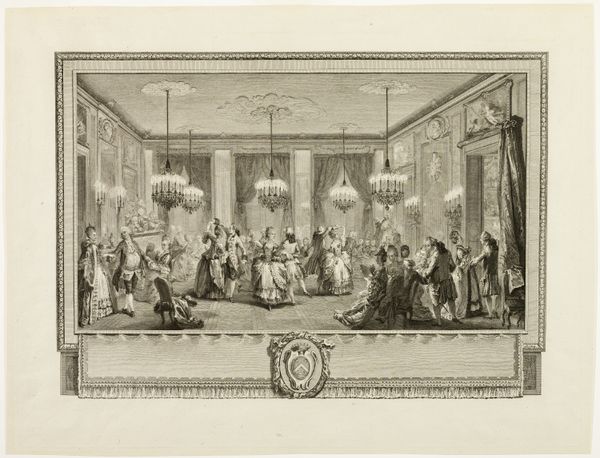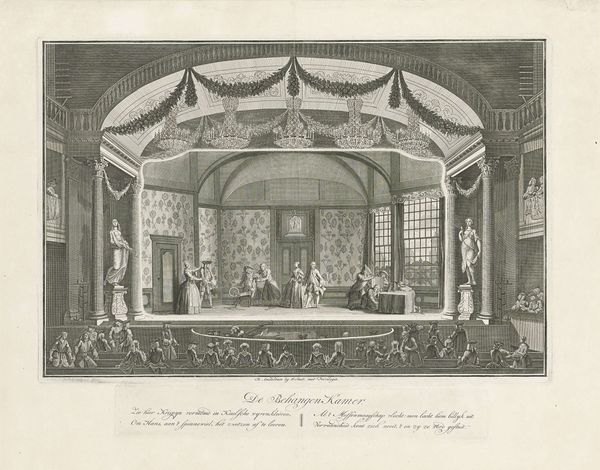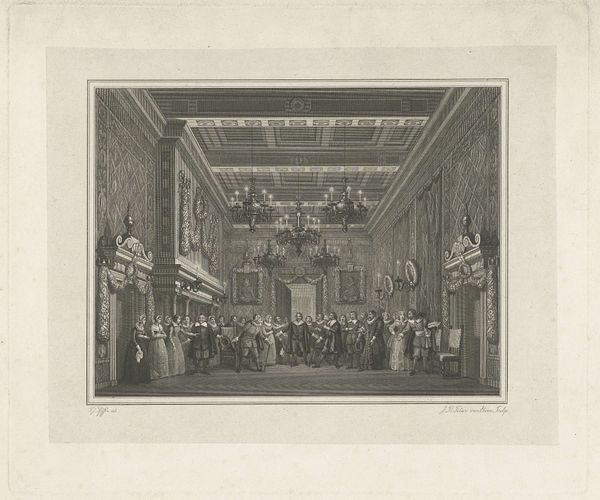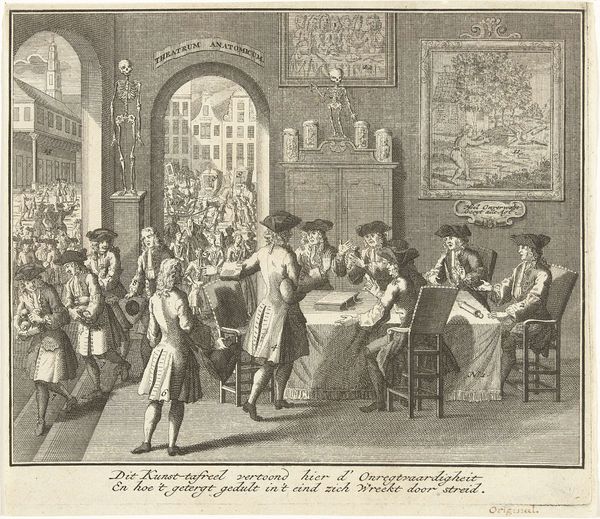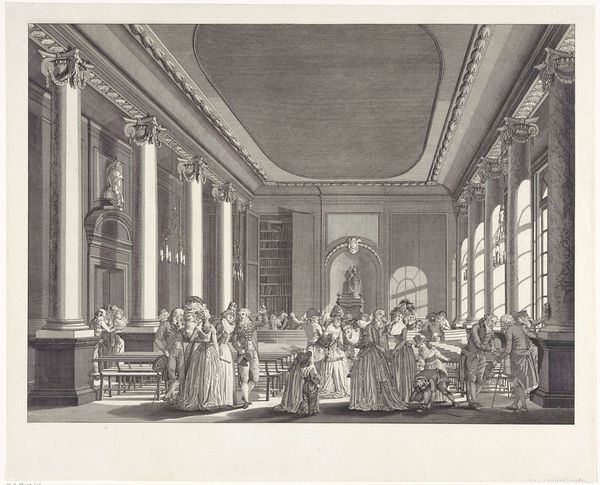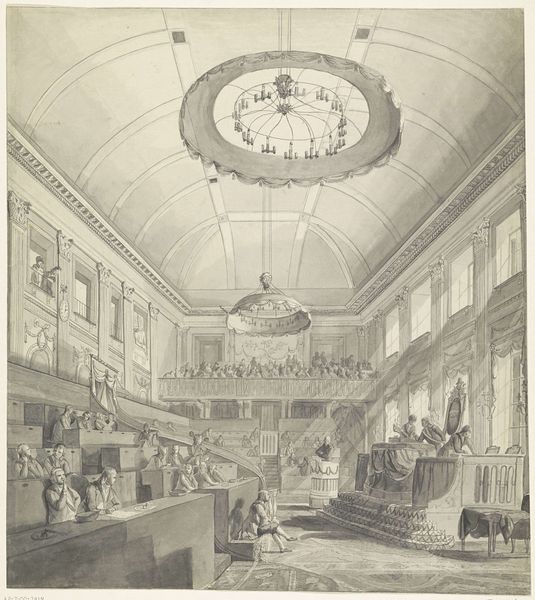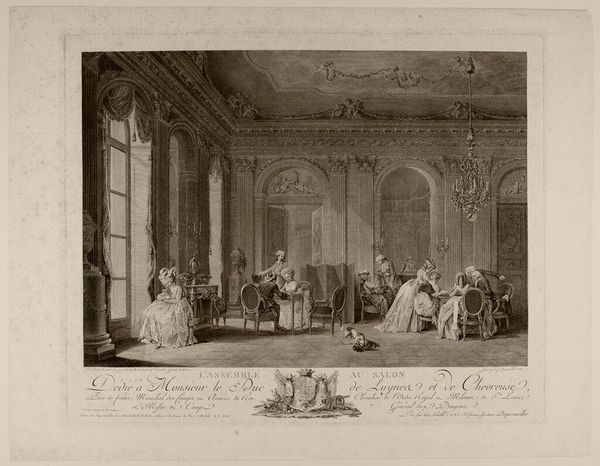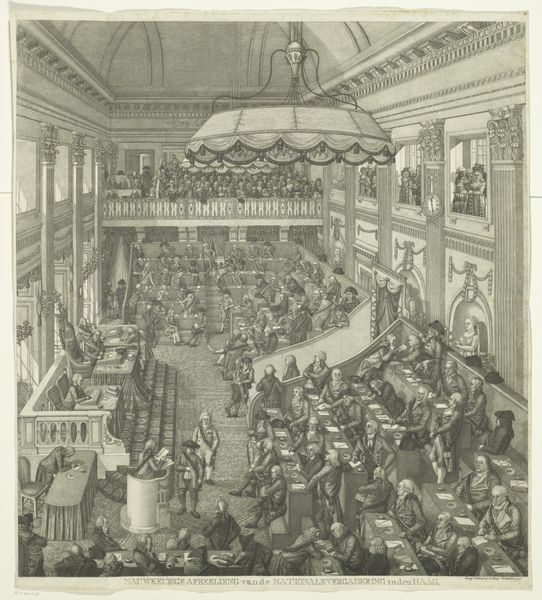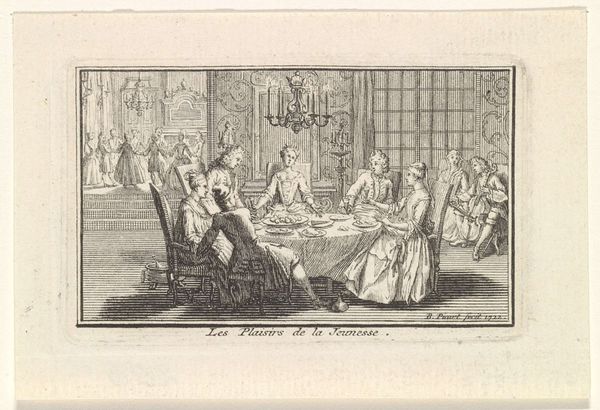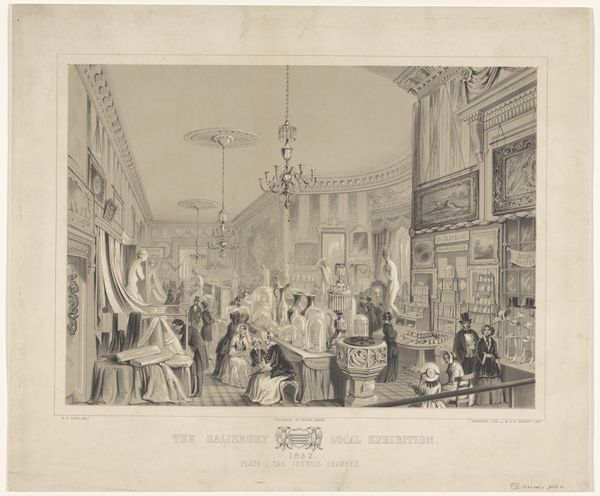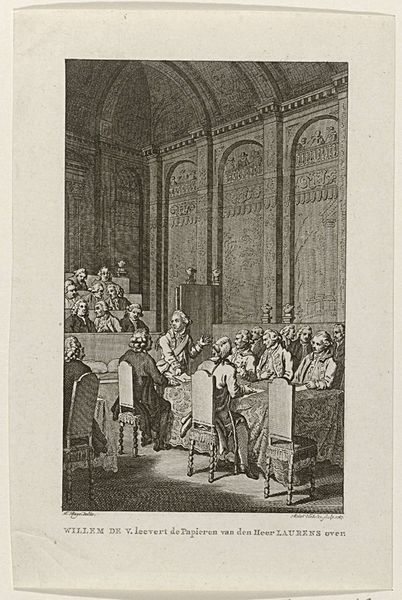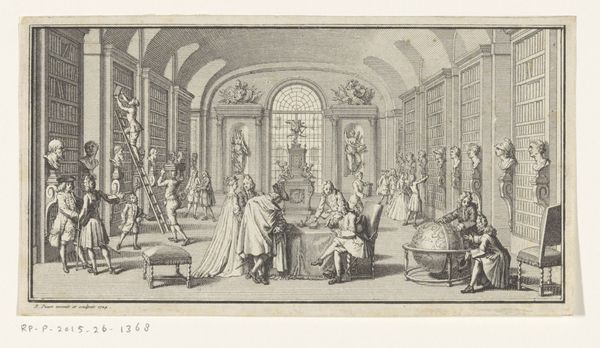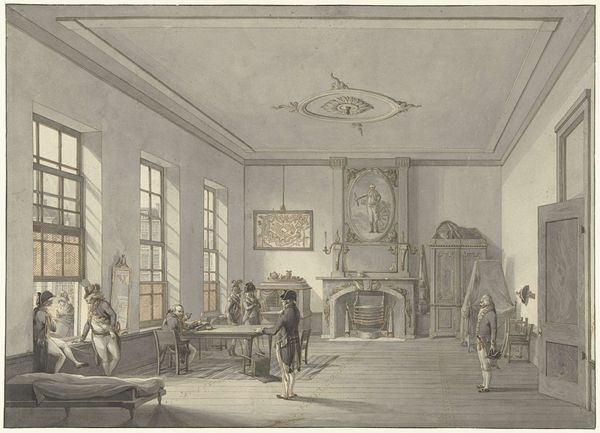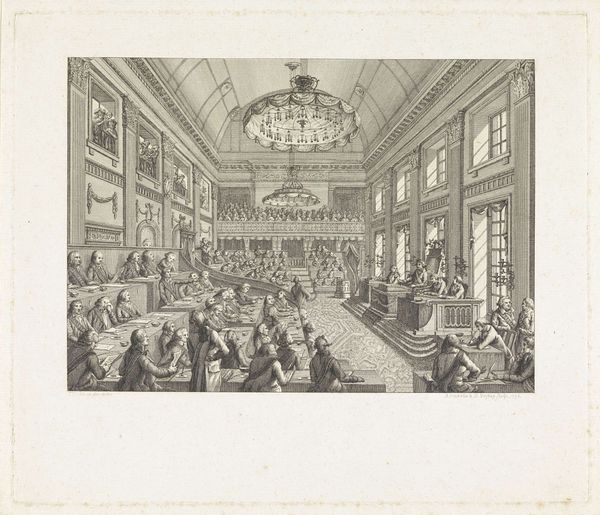
Banquet for the English King Charles II in the Mauritshuis in The Hague 1660
0:00
0:00
print, engraving
#
narrative-art
#
dutch-golden-age
# print
#
old engraving style
#
group-portraits
#
19th century
#
genre-painting
#
history-painting
#
engraving
Dimensions: height 402 mm, width 490 mm
Copyright: Rijks Museum: Open Domain
Curator: This engraving by Pieter Philippe, made around 1660, is called "Banquet for the English King Charles II in the Mauritshuis in The Hague." Editor: My first thought is of a meticulously arranged stage. Everyone seems posed, and the detail, even in this monochrome print, feels quite deliberate and theatrical. Curator: Indeed. The event itself was hugely symbolic, marking Charles II's restoration to the English throne. His exile in The Hague was supported by the Dutch, and this banquet at the Mauritshuis was a very public display of that support. Think of it as a crucial act of political theater itself, now preserved and circulated as an image. Editor: You can certainly read the symbolism in their postures. The King stands out slightly, but he's also carefully integrated within the group – not aloof, but subtly elevated. And look at the tapestries, garlands, and ornate chandeliers; they speak volumes about Dutch affluence and their eagerness to welcome royalty. What's really catching my eye is how ordered everything is. Is that about trying to express stability? Curator: Precisely. The imagery projects not just welcome but also strength and order. Consider this was only a few years after the end of the English Commonwealth, the Interregnum – and here is the exiled monarch returning from a haven of stability. The setting is significant as well: the Mauritshuis, while currently a famous art museum, was designed as a residence and hosted such significant state occasions. It puts art, politics and social history together. Editor: I suppose even the very act of making it an engraving contributes to that aura of authority. Printmaking meant wider distribution. Beyond that, even the patterns – swirls of tablecloth, precise folds in their garments – contribute. But it also speaks of ephemerality as they record this very precise event. So what is permanent and what is momentary, becomes fascinating! Curator: Very insightful. Prints served as potent tools to disseminate information and shape public opinion during this era. This wasn’t just documentation; it was constructing and propagating a carefully managed image of power and restored monarchy. Editor: A powerful record! I’ll certainly never look at an engraving in the same way now! Curator: Absolutely. A potent combination of art, social signaling, and impactful power projection all neatly combined into a fascinating historical document.
Comments
rijksmuseum about 2 years ago
⋮
Represented here is the banquet offered by the States of Holland in May 1660 to Charles II before his departure for England. The English king sits on the right, between his aunt Elizabeth (the ‘Winter Queen’, who was expelled from Bohemia) and his sister Maria Henrietta Stuart, Princess of Orange. In the foreground is the latter’s son, the young William III, the future king of England.
Join the conversation
Join millions of artists and users on Artera today and experience the ultimate creative platform.
